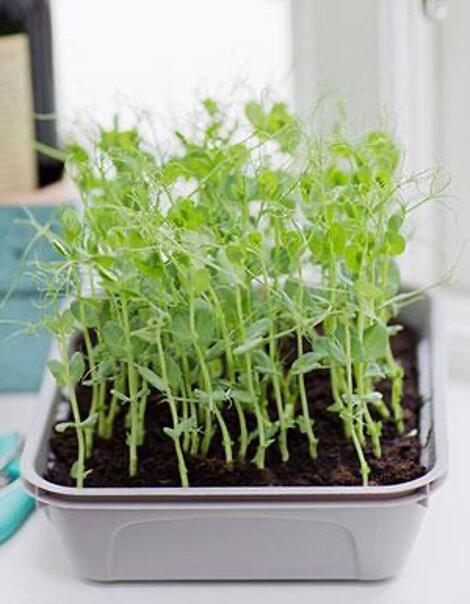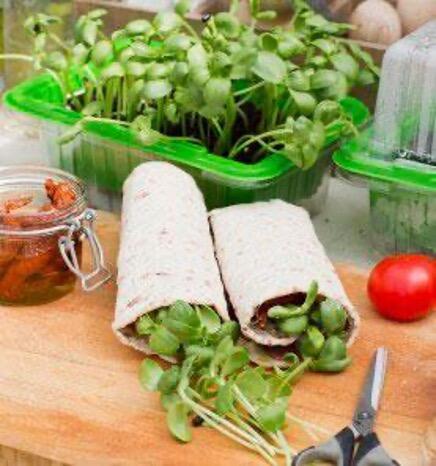5 tips on plant lighting and indoor growing
November 16, 2022With the help of plant lighting, you can grow edible plants in winter. Is plant lighting always necessary for successful indoor gardening in winter? We answer your questions.
1. Do you need plant lighting to grow indoors in winter?
No, you don't always need plant lighting to grow indoors in winter - but it will make a difference to your results. How essential they are is depending partly on what you want to grow and partly on how many hours of light there is where you live. It also depends on how much daylight reaches your home. From October to March, there is not enough daylight up here in the north.
2. When is plant lighting really needed?
Some herbs and leafy vegetables need extra light from plant lighting to grow and thrive as the days get shorter. Many varieties can survive with daylight alone in winter but will produce bigger and better harvests if they are supported by plant lighting in the darkest months. Plants that don't get enough light become tall, thin and lanky. With extra light, plants grow more vigorously and become more prolific. More to harvest, in other words!
Another advantage of plant lighting is that you can move your indoor garden if you need to. There are simple stands on which to hang your plant lights, so you can also easily change growing locations. However, the best results are usually achieved if you leave your indoor crop with extra lighting in a bright window. Then both the daylight and the plant lighting will help give your plants the light they need to grow and produce a good harvest. It's a good idea to hang the plant lights close to your plants to give them enough light.
It's also good to know that many leafy greens only need heat right when the seeds are about to germinate. Once they have emerged, they will grow better if you place them in a cool place. So, it's not heat they need during the growing phase, but rather plenty of light and preferably cooler temperatures. Plant lighting makes it possible to grow leafy greens in a cool cellar, where the plant lighting and cool air will make your crop thrive.
If there is little daylight where you grow, the plant lighting needs to be on for about 16-18 hours a day. Otherwise, 14-16 hours of plant lighting may be sufficient.

3. I want to grow edibles - what works best indoors in winter?
If you want something easy to grow that grows quickly, you can grow different types of sprouts in winter, for example. There are several exciting and tasty varieties, such as radish and fennel sprouts. Sprouts don't need any extra light at all to grow.
If you want to grow other edibles indoors, micro-leaves of herbs and leafy greens harvested later tend to work best. Micro leaves (or Micro Leaf) are particularly easy to succeed with and do not always require plant lighting to grow indoors.
Herbs, lettuce and cabbage usually need extra lighting to grow well indoors in winter. If you want to grow something like this, it is therefore a good idea to buy good plant lighting. Plant lighting in the form of fluorescent fixtures with reflectors or plant lighting with LED lights are both options that work well for most types of indoor growing. If you prefer something smaller, a plant lamp is also a good option.
Once you have your plant light, you can also use it as a wintering light for Mediterranean plants or as extra lighting if, for example, you want to start growing chilies in December or January. You'll also benefit from your plant light if you want to propagate other seeds in early spring when the days are still quite short.

4. If I want to grow leafy greens indoors, what is the best thing to grow?
Micro leaves or Micro Leaf are small shoots and green leaves that are very useful and at the same time very easy to succeed with when you want to grow indoors - any time of the year really. Really easy-to-grow micro leaves include pea shoots and sunflower shoots. If you want a bit more zing and pepperiness, go for easy-to-grow micro leaves of red frill mustard or leaf radish, ‘sangria’. The spicy micro-leaves are particularly good in a salad with avocado. There are also several other exciting varieties to try.
Often micro-leaves grow very quickly and well in a bright window. In just two to four weeks, you'll have fresh, crisp shoots and green little leaves that provide tasty and welcomed vitamin injections to the dinner table. With a little extra lighting in winter, you can make the micro leaves grow even better and produce more harvests than when you grow them without lighting.
As well as microgreens, you can also grow other leafy greens indoors. Good examples are rocket, lettuce, and Asian cabbage. Try cabbage varieties such as Pak choi, mizuna or why not a mix of several Asian cabbage varieties. All these varieties need extra plant lighting to thrive indoors. Spinach can also be grown indoors with plant lighting, but spinach that likes it cool can be a little more difficult to grow successfully.
5. Which herbs can I grow indoors in winter?
Sowing seeds and watching the spices grow over the winter is lovely. Many of the spices we like to use in our cooking can be grown indoors if they get enough light and small doses of nutrients from time to time.
Here's a list of spices you can try growing indoors, preferably with plant lighting:
Basil - Basil likes lots of light and, unlike leafy greens, it also needs lots of heat, even during the sprouting phase.
Lemon balm - An easy-to-grow herb that likes a bright window and not too wet.
Dill - Dill takes some time to germinate (both outdoors and indoors) but also does well in an indoor setting as long as the soil is kept moist.
Mint - Mint is a real survivor and spreads very well in the pot.
Oregano - Oregano is very dependent on lots of light.
Parsley - Parsley can be sown indoors in pots and likes a bright, sunny spot.